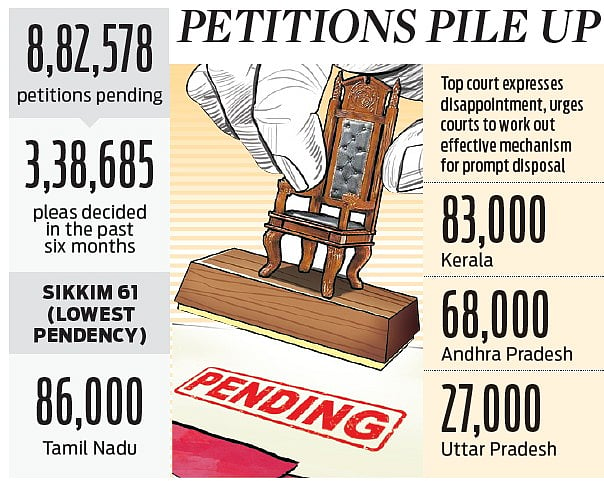Context:
The Supreme Court of India has expressed deep concern over the massive pendency of execution petitions in district courts across the country.
About execution petition:
An execution petition is a legal tool used to implement a decree, and it is the final and most crucial stage of a lawsuit. Despite winning court cases, many litigants are stuck in a second battle, to get what a court has held they are legally owed.
Key Findings:
-
- Over 8.82 lakh execution petitions pending: The Supreme Court's review of nationwide data revealed that over 8.82 lakh execution petitions are pending across district courts.
- Delays in disposal: The average time taken to dispose of an execution petition is 3.97 years, adding to the already lengthy duration of civil suits.
- Reasons for delay: The top reasons for delay include legal counsel not being available (38.9%), stay on proceedings by a court (17%), and awaiting documents (12%).
- Over 8.82 lakh execution petitions pending: The Supreme Court's review of nationwide data revealed that over 8.82 lakh execution petitions are pending across district courts.
Implications:
-
- Travesty of justice: The Supreme Court noted that the massive backlog renders justice futile, making it a travesty of justice.
- Loss of trust in judiciary: Litigants who have already spent years and resources fighting their cases are forced to wait even longer, leading to a loss of trust in the judiciary.
- Travesty of justice: The Supreme Court noted that the massive backlog renders justice futile, making it a travesty of justice.
Way Forward:
-
- Additional six months granted: The Supreme Court has granted an additional six months to all High Courts to follow up with their district courts and expedite the disposal of execution petitions.
- Monitoring progress: The court will monitor progress and take further action as needed to address the pendency crisis.
- Additional six months granted: The Supreme Court has granted an additional six months to all High Courts to follow up with their district courts and expedite the disposal of execution petitions.
Conclusion:
The pendency of execution petitions is a complex issue that requires a multifaceted approach to address the systemic inefficiencies and procedural hurdles. The Supreme Court's intervention is a step in the right direction, but sustained efforts are needed to ensure timely justice for litigants.








